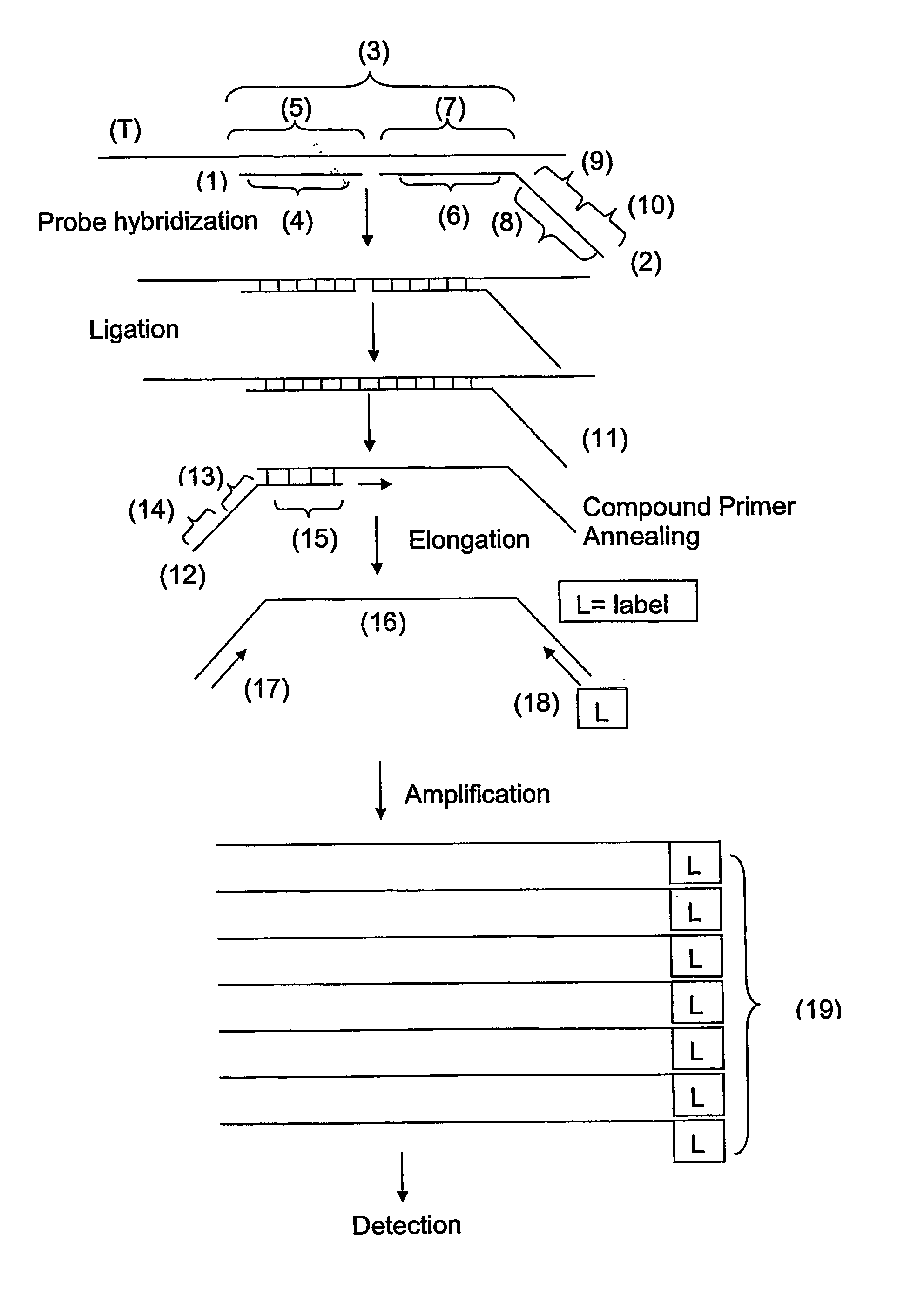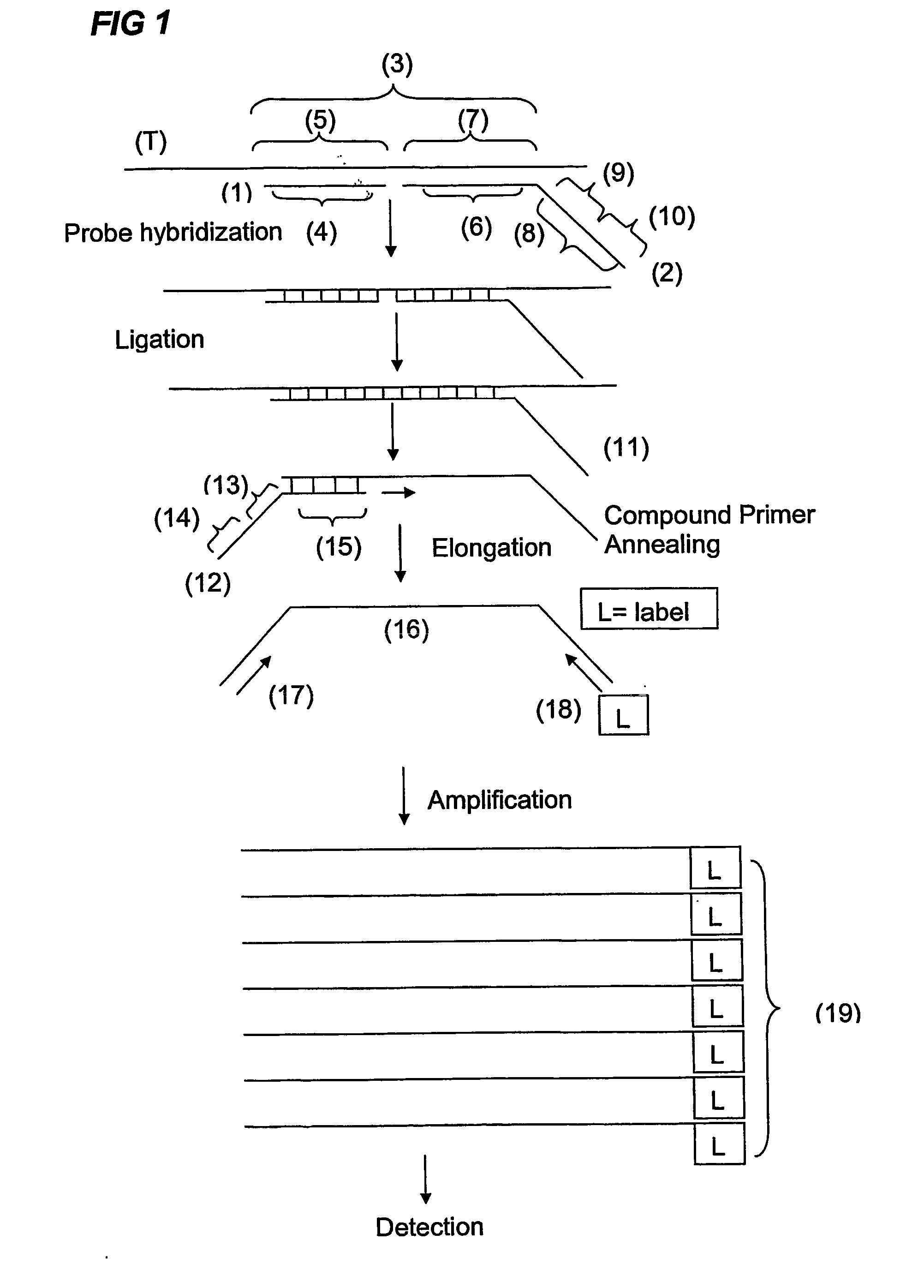Ola-Based Methods for the Detection of Target Nucleic Avid Sequences
a technology of avid sequences and target nucleic acids, applied in the field of molecular biology and biotechnology, can solve the problems of hands-on time, difficult to exploit the high multiplex capacity of ola techniques, and the upper limit of currently available chemical oligonucleotide synthesis techniques
- Summary
- Abstract
- Description
- Claims
- Application Information
AI Technical Summary
Benefits of technology
Problems solved by technology
Method used
Image
Examples
example 1
Description of Biological Materials and DNA Isolation
[0245] DNA was isolated from leaf material of 4 homozygous tomato lines using methods known per se, for instance essentially as described in EP 0 534 858, and stored in 1×TE (10 mM Tris-HCl pH 8.0 containing 1 mM EDTA) solution. Concentrations were determined by UV measurements in a spectrophotometer (MERK) using standard procedures, and adjusted to 100 ng / μl using 1×TE.
example 2
Identification of SNPs
[0246] The selected SNPs are identified and summarised in Table 1.
example 3
Oligonucleotide Probe Design for Oligonucleotide Ligation Reaction
[0247] The oligonucleotide probes (5′-3′ orientation) were selected to discriminate the SNP alleles for each of the SNP loci described in Example 2. All the probes are phosphorylated at the 5′ end. The sequences are summarised in Table 2A and 2B. One group of first probes contains thioate linkages to render the probes exonuclease resistant (indicated in bold, the three most 3′nucleotides, Table 2A). Another group of first probes is biotinylated at the 3′ end (Table 2B).
[0248] The second probes are provided in both allele specific forms and with an identifier (indicated in bold) generating a length difference of two nucleotides between two alleles for one locus (Table 3).
PUM
| Property | Measurement | Unit |
|---|---|---|
| molar ratio | aaaaa | aaaaa |
| molar ratio | aaaaa | aaaaa |
| molar ratio | aaaaa | aaaaa |
Abstract
Description
Claims
Application Information
 Login to View More
Login to View More - R&D
- Intellectual Property
- Life Sciences
- Materials
- Tech Scout
- Unparalleled Data Quality
- Higher Quality Content
- 60% Fewer Hallucinations
Browse by: Latest US Patents, China's latest patents, Technical Efficacy Thesaurus, Application Domain, Technology Topic, Popular Technical Reports.
© 2025 PatSnap. All rights reserved.Legal|Privacy policy|Modern Slavery Act Transparency Statement|Sitemap|About US| Contact US: help@patsnap.com



